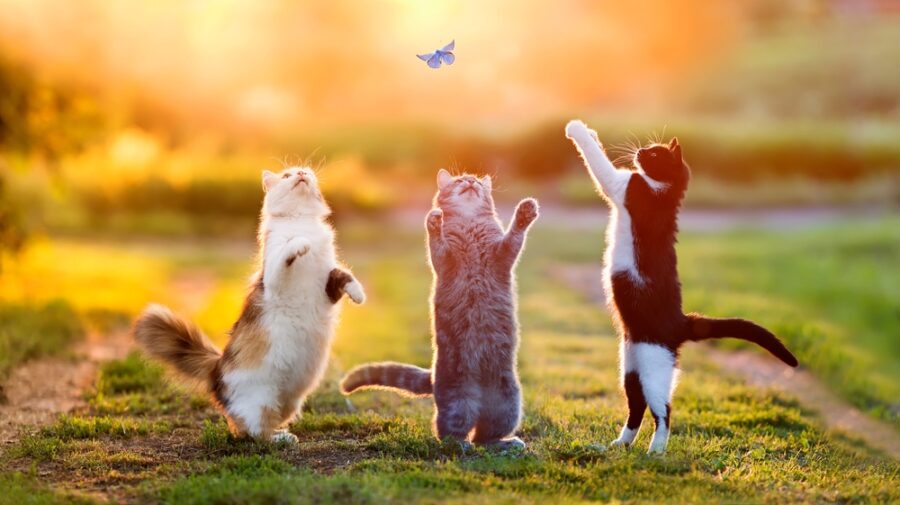[ad_1]
We often think of fetching as a dog’s game, but recent research has shattered this misconception. A study led by Mikel Delgado from Purdue University’s College of Veterinary Medicine has revealed that our feline friends are more playful and interactive than we might have thought. Let’s dive into the fascinating world of cat fetching!
Cats Do Fetch!
Delgado’s personal experience with her adopted shelter cats sparked this intriguing research. To her surprise, all three of her new feline companions enjoyed playing fetch with toy mice. This led to a broader investigation into the prevalence of fetching behavior among cats.
The Numbers Say Fetching is Common in Cats
The study, analyzing data from 8,224 cat parents, found that a whopping 41% of cats engage in fetching behavior. While it’s true that dogs still lead the pack with 78% fetching, the number of fetching felines is impressively high and challenges our preconceptions about cat behavior.
Some Cats are Natural Fetchers
Interestingly, certain cat breeds are more likely to fetch than others. Breeds originating from the Far East, such as Burmese, Siamese, and Tonkinese, show a higher propensity for fetching. Other breeds like Abyssinians, Bengals, and Siberians also top the list of likely fetchers.
Age and Gender
The study revealed that younger male cats are more likely to engage in fetching behavior. This aligns with what we know about playfulness in younger animals and the tendency for male cats to be more outgoing in their play behaviors.
Indoor vs. Outdoor:
Indoor cats were found to be much more likely to fetch compared to their outdoor counterparts. Researchers hypothesize that this could be due to indoor cats having fewer opportunities for hunting, leading them to engage in play behaviors that mimic hunting instincts.
Debunking the Aloof Myth
Delgado emphasizes that fetching is a social behavior, demonstrating that cats are indeed socially engaged with their human companions. This challenges the common misconception that cats are aloof or independent, showing instead that they enjoy interactive play with their humans.
Factors That Affect Fetching
Interestingly, cats were less likely to fetch if they had poor health or lived with dogs. This suggests a cat’s overall well-being and living situation can influence their play behaviors.
Embrace Your Cat’s Playful Side
This research opens up new perspectives on feline behavior and the bond between cats and their human companions. Whether your cat fetches or not, remember that each feline is unique. Engaging in interactive play, be it fetching or other games, can strengthen your bond and provide mental and physical stimulation for your furry friend. So next time you’re playing with your cat, why not try tossing a toy and see what happens? You might be surprised at your cat’s hidden talents!
Post Views: 5
Animal Wellness is North America’s top natural health and lifestyle magazine for dogs and cats, with a readership of over one million every year. AW features articles by some of the most renowned experts in the pet industry, with topics ranging from diet and health related issues, to articles on training, fitness and emotional well being.
[ad_2]
Source link
